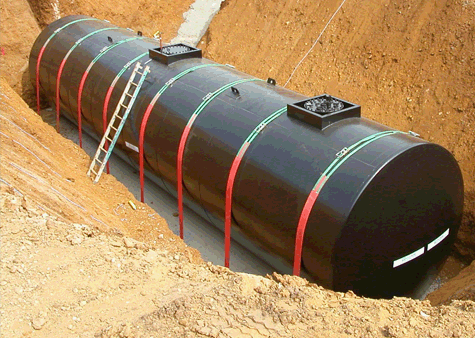Dear Hugh and Jim,
Here is my anecdotal knowledge relating to long-term storage of gasoline.
I grew up on my family’s dairy farm in northern Wisconsin. My dad had a 300-gallon steel gas tank that sat on a stand about six feet off the ground in the shade of a White Pine tree. He refilled it every year or two, and that gas powered our two Allis Chalmers WD 45 tractors and the other gas-powered engines, lawn mowers, etc., on the farm. So far as I know, he never used any stabilizers and we never had any fuel-related problems. Of course, the gas was rotated frequently enough that one would not expect there to have been problems.
My dad continued to raise a few head of beef and generally had a couple draft horses on the farm in the years after he sold the dairy herd and semi retired. He used much less gas then but still used it out of the 300-gallon tank. He would buy a couple hundred gallons of (non-ethanol) gas every two or three years as he needed it, again without using stabilizers and without any problem, even though the tank was always only partly full. My dad died in 2003. I know that the gas in the tank at the time of his death dated back to at least 2002 and might have been as old as 2000. I continued to use the gas out of that tank for the Allis tractors and for lawn mowers on the farm until 2008, when I emptied the tank and moved to my house. Even without fuel stabilizers, in an above-ground (although constantly shaded), partially empty tank, I experienced no problems with the gas, even in small engines. I have no doubt that the gas steadily degraded over that period of time, but it still performed adequately.
As a result of that experience, I have adopted the following practice for long-term storage of gas. Because I didn’t have a place to put the tank where it would be constantly shaded, as it was by the White Pine on the home place, I put it on the east gable end of my detached garage where it is shaded from noon on, and fashioned a covering of corrugated aluminum roof panels to protect it from direct sunlight. For the first few years I would use the gas and refill the tank with fresh gas every two years. That meant drawing down my supply so that if some calamity occurred at the worst possible moment, as calamities have a habit of doing, I would be left without my emergency fuel supply. Therefore, I have since adopted my current strategy, which seems to work fine. I treat the gas every nine to twelve months with PRI-G and, during the summer months, use gas out of the tank for lawn mowers and tractors. Whenever I have drawn the tank down by ten or fifteen gallons, I top it off with PRI-G-treated, non-ethanol gas. I continue to treat the whole 300 gallons with PRI-G every nine to twelve months. Over the course of a summer I will typically use 40 to 50 gallons of gas. In this way I will never completely rotate the gas, but I am adding the equivalent of a fresh 300-gallon tank full every six years and am depending on the PRI-G to maintain the quality of the fuel over the long run. This system, I think, carries the benefit of keeping my tank within ten or fifteen gallons of full at all times, which should help maintain the quality of the gas, and which means I should never be caught flat-footed in an emergency. Based on my experience using up my dad’s aging, untreated gas after his death, I believe that, especially with the benefit of PRI-G (in which I have much faith), the gas should always be of adequate quality. I know that diesel would be much easier to store long term in bulk, but I’m kind of attached to those old Allis tractors, and I think my system works. I offer my experience, for whatever it might be worth, to your readers. Respectfully, – F.D.










